- 1. All About Waterproof Laminate Flooring
- 2. What Makes Laminate Waterproof
- 3. Types of Waterproof Flooring Material
- 4. How Waterproof Laminate Differs from Moisture-Resistant
- 5. Main Technical Characteristics
- 6. Finishing Classes
- 7. Pros and Cons
- 8. Where is it Best to Install the Flooring: Reviews
- 9. Factors to Consider When Choosing the Material
All About Waterproof Laminate Flooring
When it comes to flooring, resistance to water is crucial, especially if it’s installed in the kitchen or bathroom. That’s why manufacturers strive to enhance the waterproof properties of their products. This leads to modifications of well-known finishing materials, such as waterproof laminate. Let’s delve into the features of this flooring, its characteristics, tips for choosing it, and where it’s best used.
What Makes Laminate Waterproof
Laminate flooring is a type of composite flooring. It comes in the form of planks or tiles, with each piece featuring a locking system akin to a groove and tongue. These components make it easy to assemble the planks into a seamless “floating” floor. Laminate flooring is multi-layered, consisting of a decorative and protective surface layer on top, and a balance layer underneath, which serves as an underlayment. The base is typically made of medium or high-density fiberboard (MDF).
Waterproof laminate models are assembled using the same method, but there’s a crucial difference. Instead of an MDF base, they use a plastic base. As a result, this type of laminate looks almost identical to models with an MDF base, but it has different performance characteristics. It’s important to note that waterproof laminates fall into two material categories. Let’s briefly describe both.
Limited Water-Resistant
Its base consists of medium or high-density fiberboard treated with special impregnations and pressed under high pressure. While it is less sensitive to moisture compared to regular MDF, it can still be damaged by prolonged water exposure. Manufacturers always specify the maximum allowable time for such contact on the packaging. This type of finish can be used in kitchens but is not recommended for bathrooms.

Water-Resistant
The base material is extruded high-density polyvinyl chloride (PVC). It is entirely impervious to water in all forms, whether it’s water vapor or immersion in water. There is no specified limit for direct water contact on the packaging. This type of finish does not deteriorate in high humidity environments, such as bathrooms, saunas, and swimming pools.
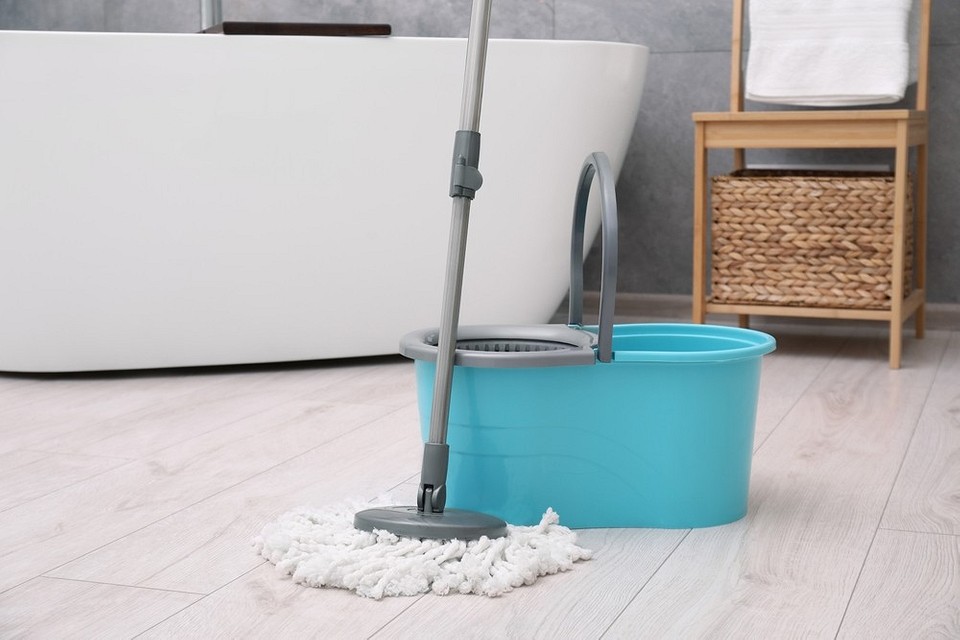
Types of Waterproof Flooring Material
The foundation of any click-lock waterproof laminate is polyvinyl chloride (PVC). Depending on the filler added to the raw material and the manufacturing process, there are three primary material categories. Let’s delve into each of them.
Quartz Vinyl, also known as LVT Flooring
The base is made of polyvinyl chloride with the addition of quartz sand, which can account for anywhere from 30% to 80% of the composition. This imparts strength, resistance to deformation, and durability to the material. Quartz vinyl waterproof laminate comes in the form of tiles with a click-lock system along the edges. Installation is similar to regular laminate. There are also models of quartz vinyl tiles without click-lock, which are installed using adhesive.

Vinyl, also known as Rigid Vinyl
A single-layer coating made from thickened polyvinyl chloride. The planks have locking elements along the edges, but there are models without them designed for adhesive installation. It forms a dense, flexible sheet that effectively absorbs sound and expands slightly when heated. When installing vinyl flooring, it’s essential to leave gaps around the perimeter of the room and make technological breaks near entrances. Failing to do so can cause deformation. It should only be installed on a carefully leveled surface.
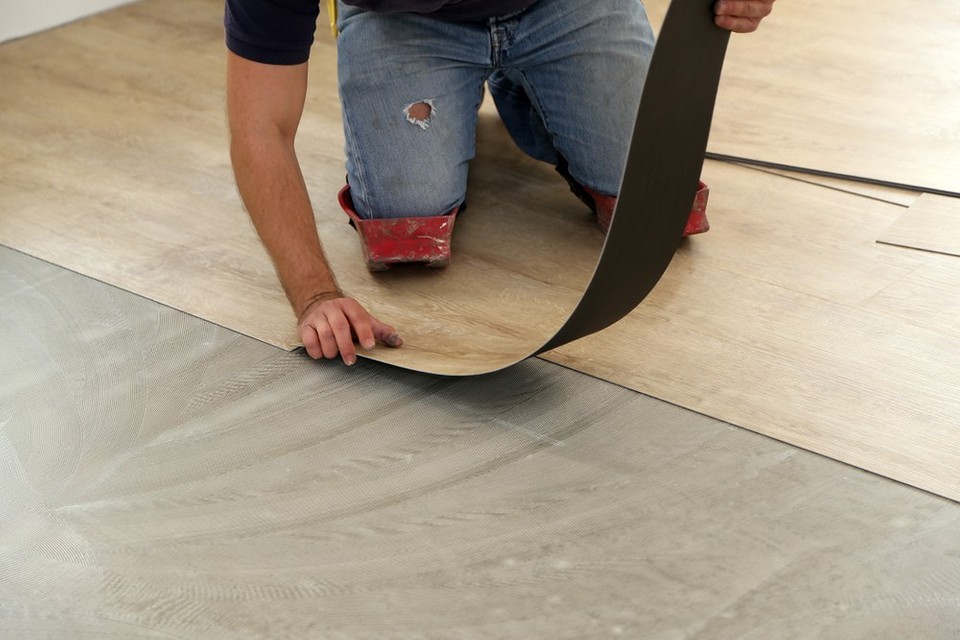
SPC Laminate
During the manufacturing of its base, calcium carbonate is added, constituting approximately 70% of the composition. This gives the material maximum geometric stability. SPC laminate is virtually immune to temperature expansion, allowing it to be installed without mandatory gaps and breaks in the technology. It can even be used as flooring for radiant heating systems. The high density of the stone-polymer coating enhances its durability and lifespan. This makes it the best waterproof laminate in terms of stability and longevity.

How Waterproof Laminate Differs from Moisture-Resistant
These two materials are often confused, but they are entirely different. Moisture-resistant flooring is made with an HDF (high-density fiberboard) base. This is a wood-based board impregnated with wax and compressed under high pressure. While it significantly improves its moisture resistance, it remains sensitive to water exposure. Moisture-resistant planks can tolerate increased humidity in the room for a limited time, even brief water contact.
Waterproof flooring is manufactured with a PVC base. It is entirely insensitive to moisture, very durable, and resistant to wear. When choosing a finish, it’s important to remember the difference between these materials. Waterproof flooring can be installed in areas with high humidity, such as bathrooms, saunas, and utility rooms. Moisture-resistant flooring is suitable for rooms where humidity occasionally increases, and there is a risk of liquid spillage, such as kitchens, balconies, and entryways.
Main Technical Characteristics
Let’s list the key characteristics of waterproof laminate:
- Waterproofness: 100%. Insensitive to moisture and direct water contact.
- Plank thickness: from 2 to 9 mm. Thicker planks provide better insulation properties.
- Protective layer thickness: from 0.3 to 0.7 mm. Thicker layers result in longer lifespan.
- Wear resistance: from 31 to 34 class.
- Thermal conductivity and sound absorption: good, dependent on plank thickness.
- Fire safety: conditionally safe. Must be protected from open flames.
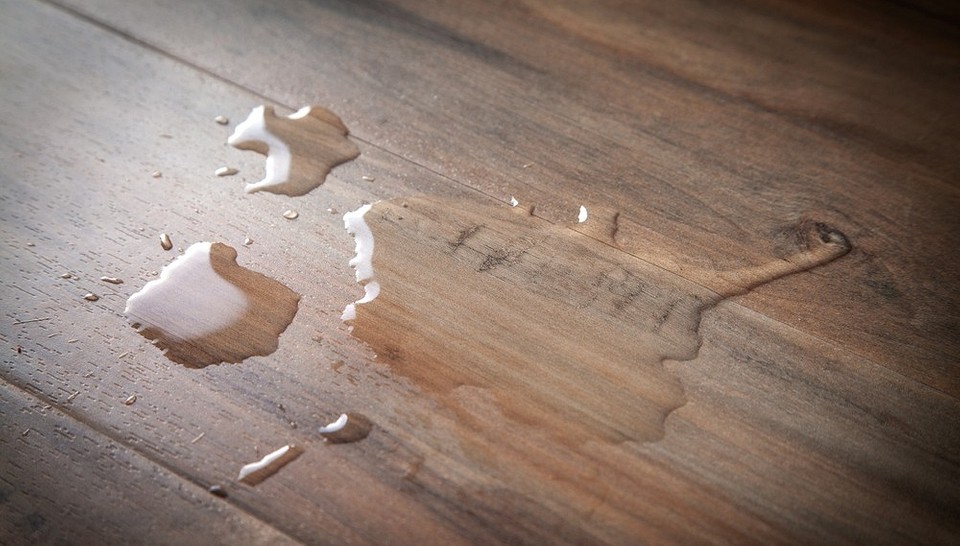
Finishing Classes
The set of characteristics of waterproof laminate determines its wear resistance class, marked with two numbers. The first indicates the allowable load, and the second represents the level of protection of the coating. Waterproof finishes have four classes, and let’s briefly describe each one.
- 31. Highest wear resistance. Designed for domestic use, only in areas with low foot traffic. It will last approximately 10 years. (Imperial: It will last approximately 10 years.)
- 32. Medium wear resistance. Considered for residential use, suitable for rooms with moderate foot traffic. It will last up to 15 years. (Imperial: It will last up to 15 years.)
- 33. Water-resistant laminate of class 33 is considered semi-commercial with high wear resistance. It can be installed in high-traffic areas, such as stores, offices, etc. In residential conditions, it will last around 20 years. (Imperial: In residential conditions, it will last around 20 years.)
- 34. Water-resistant laminate of class 34 belongs to commercial floorings. It has the highest wear resistance, so its usage intensity can be maximum. In a residential setting, it will last 30-40 years. (Imperial: In a residential setting, it will last 30-40 years.)
Pros and Cons
Plastic water-resistant laminate has many advantages. Let’s briefly characterize them.
Pros
- It does not deteriorate under the influence of moisture. This includes water vapor and direct prolonged contact with liquids. (Imperial: This includes water vapor and direct prolonged contact with liquids.)
- Resistance to temperature fluctuations. The structure of the coating does not break or deform under the influence of high temperatures. Contact with hot water will not harm the material. (Imperial: The structure of the coating does not break or deform under the influence of high temperatures. Contact with hot water will not harm the material.)
- Environmentally friendly. Non-toxic raw materials and safe technologies are used in the manufacturing process. During use, the covering does not release toxins. However, certificates of compliance should be checked. (Imperial: During use, the covering does not release toxins. However, certificates of compliance should be checked.)
- Safety. An anti-slip film is applied to the outer side of the lamella so that walking on the floor, even if it gets wet, is safe. (Imperial: An anti-slip film is applied to the outer side of the lamella so that walking on the floor, even if it gets wet, is safe.)
- Durability and strength. The coating handles loads well, intense mechanical impact, and resists wear and tear. It easily withstands active cleaning with household chemicals. (Imperial: The coating handles loads well, intense mechanical impact, and resists wear and tear. It easily withstands active cleaning with household chemicals.)
- Good insulating properties. The coating has low thermal conductivity and good sound insulation, especially in models with voids inside the main layer. (Imperial: The coating has low thermal conductivity and good sound insulation, especially in models with voids inside the main layer.)
- Resistance to dirt. Antistatic impregnation prevents dust or pet hair from accumulating. Fungicide treatment prevents mold from settling on the surface. The material is easy to wash and clean. (Imperial: Antistatic impregnation prevents dust or pet hair from accumulating. Fungicide treatment prevents mold from settling on the surface. The material is easy to wash and clean.)
- Attractive appearance, a wide variety of colors and textures. The covering effectively imitates different materials, most often various wood species. (Imperial: The covering effectively imitates different materials, most often various wood species.)
Cons
- High price. Polyvinyl chloride finish is more expensive than regular laminate. (Imperial: Polyvinyl chloride finish is more expensive than regular laminate.)
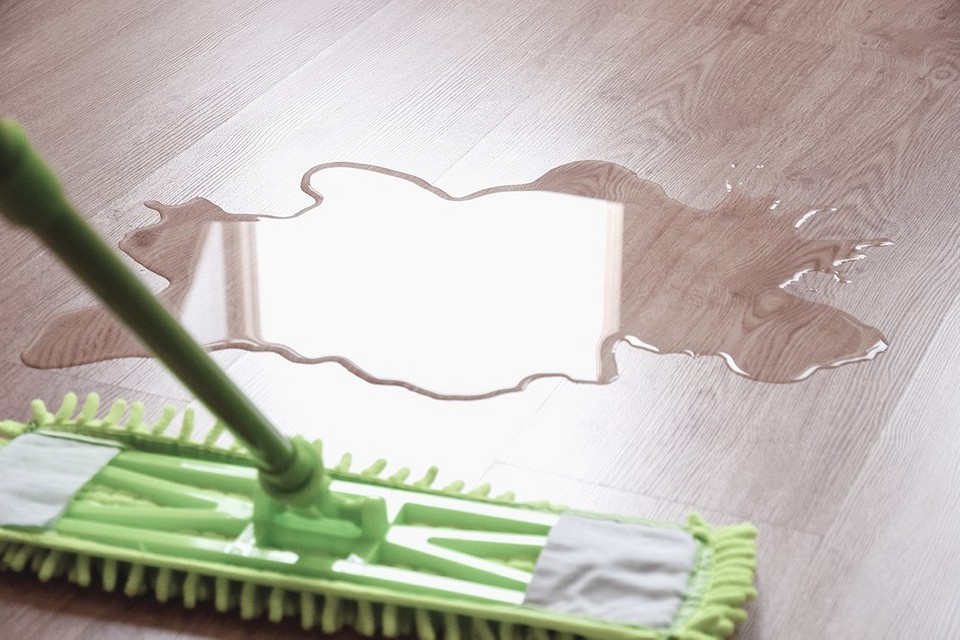
Where is it Best to Install the Flooring: Reviews
The manufacturer recommends installing water-resistant flooring in rooms with high humidity, temperature fluctuations, and where direct contact with liquids is possible. Thus, water-resistant laminate is suitable for the kitchen, bathroom, toilet, sauna, etc. It can be safely laid in unheated rooms during the winter. It should be understood that the cost of finishing is higher than that of moisture-resistant and especially regular cladding. Therefore, it is not advisable to lay it in all rooms. (Imperial: It should be understood that the cost of finishing is higher than that of moisture-resistant and especially regular cladding. Therefore, it is not advisable to lay it in all rooms.)
Water-resistant laminate, according to those who have purchased it, is excellent for bathrooms and toilets. It feels warm to the touch, and it’s non-slip. It provides a pleasant and safe surface to step on with wet feet after water procedures. Moreover, it is not afraid of moisture and remains undamaged even after being exposed to liquid for some time. The only thing to keep in mind is to prevent moisture from seeping into the seams. There is a possibility that if it gets underneath the surface, it can create a damp and warm environment where mold may develop.
Water-resistant material has proven to be excellent for kitchens as well. It is durable and can withstand the impact of sharp and hard objects. Special impregnation protects it from absorbing odors and grease. It is easy to clean, and spilled liquids won’t leave marks or damage the surface. Additionally, it offers a comfortable walking surface, is warm, and doesn’t make noise when walked upon, unlike wood-based flooring.
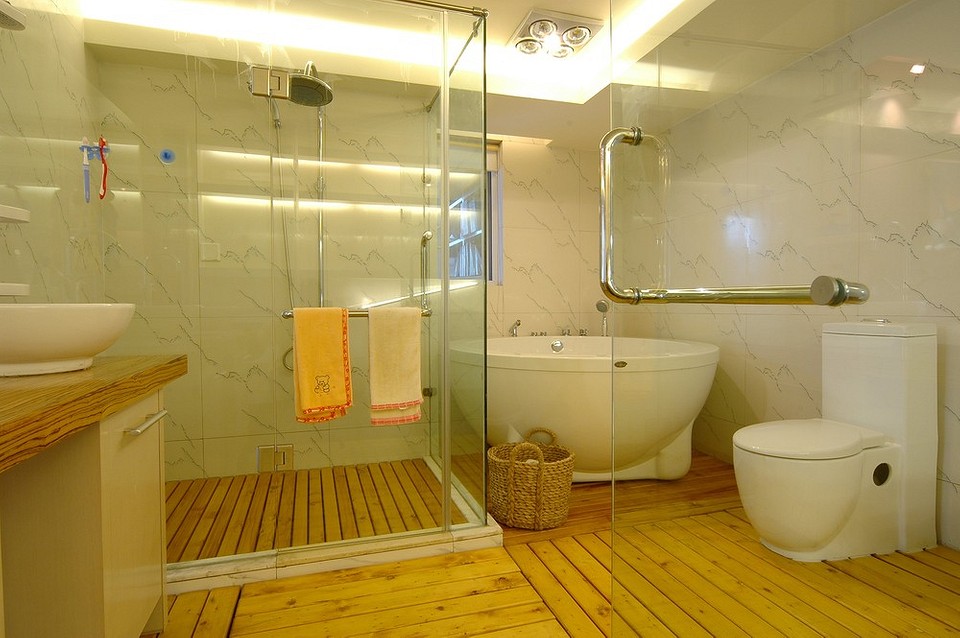
Factors to Consider When Choosing the Material
All the quality claims made by the manufacturer will only apply to high-quality original products. Therefore, it’s advisable to purchase the flooring only from specialized stores and always check for certificates of compliance. Otherwise, you might end up with flooring with unpredictable characteristics. Let’s go over how to choose the best water-resistant laminate.
You need to carefully examine the labeling to ensure that the planks are resistant to water. All types of vinyl water-resistant laminate are marked as PVC, which stands for “polyvinyl chloride,” the material used for the finish’s base. Limited water-resistant models may be labeled as HDF, which is also used for moisture-resistant ones. HDF stands for high-density fiberboard. It has limited resistance to moisture, so it’s not suitable for bathrooms and toilets.
Examine the locking mechanisms. They should be properly treated with impregnation so that they don’t look wet or slippery. If possible, it’s advisable to see how they perform when locked. There should be no gaps, even the smallest ones, to prevent liquid from seeping under the flooring. Otherwise, mold may develop underneath over time.
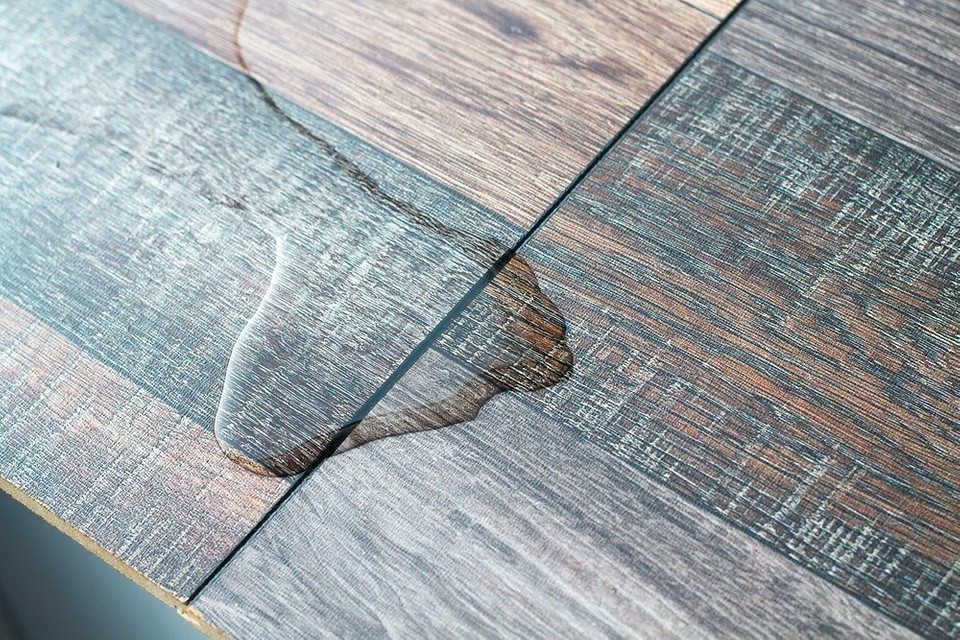
An important consideration is the purpose of the room where the flooring will be installed. This determines the wear resistance class to choose. Class 34 is best suited for unheated rooms, hallways with high foot traffic. Class 33 is sufficient for bathrooms, toilets, and entryways. For the kitchen, a class 32 laminate will do, but if there are always many people or frequent spills and impacts, it’s better to opt for class 33.
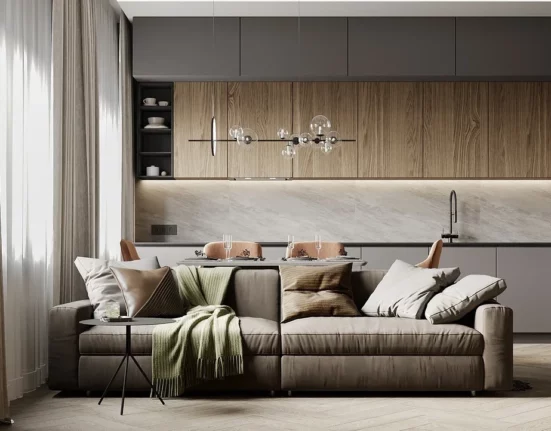
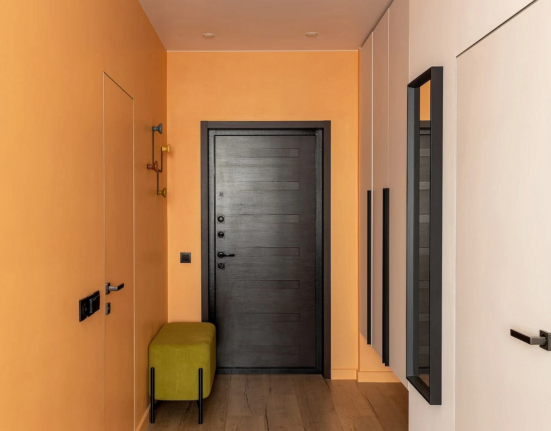
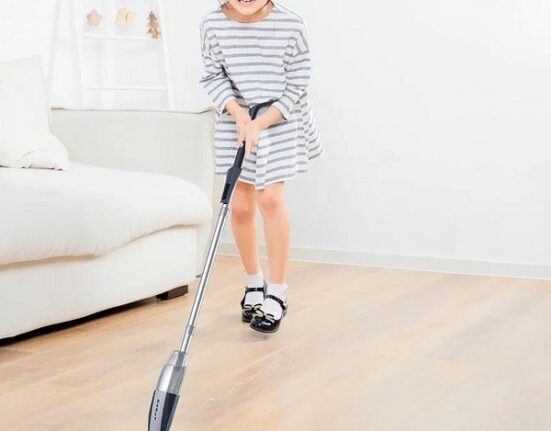
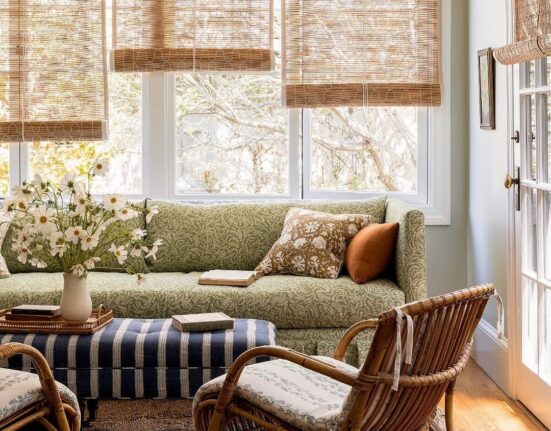
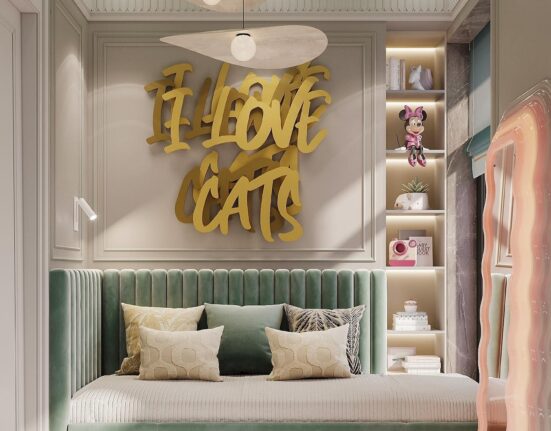
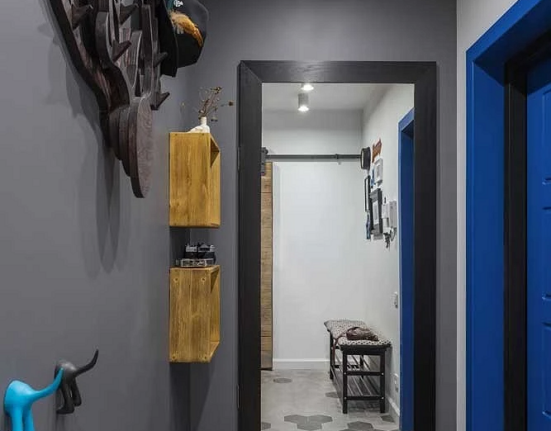
Leave feedback about this